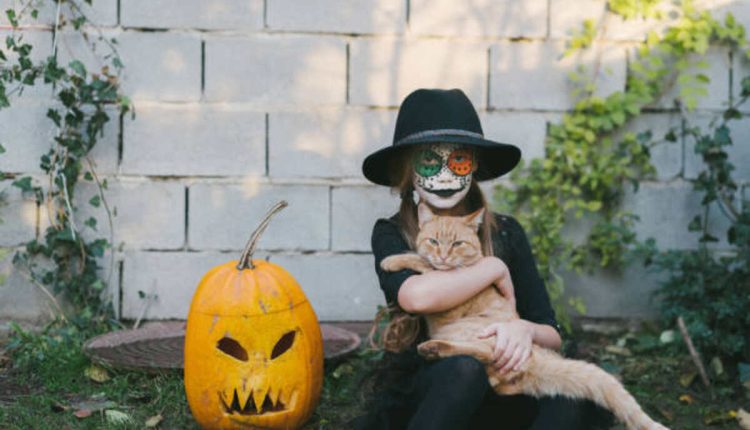Henriette Ronner-Knip’s paintings depicting cat mischief are an eye-opener to their playful spirit and the true joy they can bring us all. Although she also painted dogs, Ronner-Knip excelled at portraying our favorite felines. What do you consider about Modern cat art?
Henry Balthus had become a celebrated artist by the time of his death. His trademark subjects were cats and girls.
The Renaissance
Cats have fascinated people for millennia with their mysterious allure and independence, from ancient Egyptians to modern Japan and beyond. Cats have played pivotal roles in kingship, mythology, and daily life–from Egyptian kingships and legends, and myths to everyday life–while remaining independent creatures who typically maintain low maintenance needs while continuing to attract our fascination as independent, self-reliant species with characteristically nonchalant attitudes such as those seen today with digital art installations featuring cats as subject matter. Their longstanding beauty has inspired artists across many disciplines from painting and sculpture to photography and digital art installation works depicting these independent species’ inspirational qualities–with one inspiring another!
The Renaissance marked a revival of classical thought, leading to an appreciation of nature and humanity that extended even to Medieval paintings of cats as symbols of fertility, lust, and treachery – such as in Hieronymus Bosch’s Garden of Earthly Delights where one such cat can be seen carrying off a rat in its mouth!
Louis Wain was one of the pioneers in depicting cats with human characteristics throughout his career. These depictions often mirrored his emotional state after Emily died; Cat’s Nightmare depicts this time perfectly.
The Enlightenment
Cats have long been associated with sophistication and poise. Additionally, felines have often been linked with divinity; particularly in ancient Egyptian art where felines played significant roles in mythology and kingship lore. Modern artists have taken notice of this relationship by depicting cats in paintings and prints across centuries.
Within this elite embrace of Enlightenment ideals was an unshakable soft underbelly: Cats seemed to symbolize one of its core concepts – personal liberty – as both its proponents and critics saw fit.
Oudry depicted Le General as an embodiment of freedom in a 1728 painting commissioned by Louis XV, which features its coloring and gesture resembling other cats Oudry depicted, trading more on stereotypes rather than individualization. As Leonora Rosenfield states, Montaigne’s ailurophilia demonstrated this tension between enjoying Enlightenment ideals while simultaneously criticizing them.
The Baroque
The Baroque movement, the last major art movement of Renaissance Europe, focused on dramatic intensity and emotion. Bernini’s Ecstasy of Saint Teresa provides a great example of this with light and shadow creating painterly qualities in sculpture while simultaneously emphasizing the complex folds of her robe with exquisite realism.
Baroque architecture introduced an exciting new movement to architecture, employing twisted columns and forced perspective to create illusions of space. As European colonization spread to the Americas, localized versions of Baroque emerged under Spanish and Portuguese influence.
Modern Cat Artists have been greatly inspired by Baroque art styles, producing stunning works inspired by nature and wildlife. Yorkshire artist Aaminah Snowdon excels at depicting domestic cats with poised characteristics such as Here’s Looking at You while Dominique Salm uses naturalistic details and bold brush strokes to represent their majestic subjects, such as Spirit.
The Rococo
Cats have long held our hearts and imaginations captive, from cozy sofa companions to fearsome predators. This exhibition explores how this animal has inspired artists across different art styles with its timeless appeal.
Rococo, unlike baroque, favored pastel colors in its sculpture and architecture. Its elegant forms combined softness with fantasy. Some notable British exponents were Christopher Wren, John Vanbrugh, and Nicholas Hawksmoor; Hogarth famously parodied this style by featuring wall ornaments with clocks, cats, fishes, and Buddha. Today this style is known as Rococo.
Boucher’s sensuous portraits of Madame de Pompadour captured the excess and frivolity of their time. Her portraits display her surroundings – from her luxurious furniture to the porcelain she acquired – with all their splendor evident. Oudry, in his 1728 painting Le Chat General, shows his feline subject more comfortably positioned behind an ornate porphyry vase that references one of Madame de Pompadour’s commissions from Boucher.
The 19th Century
In the 19th Century, cats became an immensely popular subject for paintings and sculptures alike. Artists depicted them both as everyday scenes as well as more surreal settings; cats also served as symbols to communicate various messages to audiences.
Louis Wain was one of the foremost cat artists during this era, producing approximately 600 feline portraits each year. His depictions of cats engaging in popular activities – such as taking tea playing golf or going for walks – made him well-known.
Mary Cassatt was an influential Impressionist painter who became friends with Berthe Morisot, known for including cats in many of her works. Mary Cassatt painted Young Girl With Cat to capture their relaxing presence together on canvas.
Pierre Bonnard depicted cats frequently in his work, drawing inspiration from Japanese prints and employing vibrant hues. Here Inagaki Tomoo displays his signature thick arched lines and curvilinear motions which capture a cat’s compulsive ear-washing movements perfectly.
The 20th Century
Ancient Egyptian artwork to contemporary memes features cats as inspiration for artists. Cats embody the independence and curiosity that makes felines so compelling; thus capturing our imaginations while reflecting human emotions and social values.
Albrecht Durer depicted a predatory cat stalking a mouse in his Adam and Eve painting while Rembrandt Van Rijn depicted more domestic scenes of cats cuddling with children. Francisco Goya’s Sleep of Reason Produces Monsters also conveys our evolving attitudes toward cats as protectors.
Edouard Manet’s 1820 print The Cats provides a more playful take on cats; although not one of his more bold or dynamic pieces, this depiction demonstrates their rising popularity during that era.
Read also:










